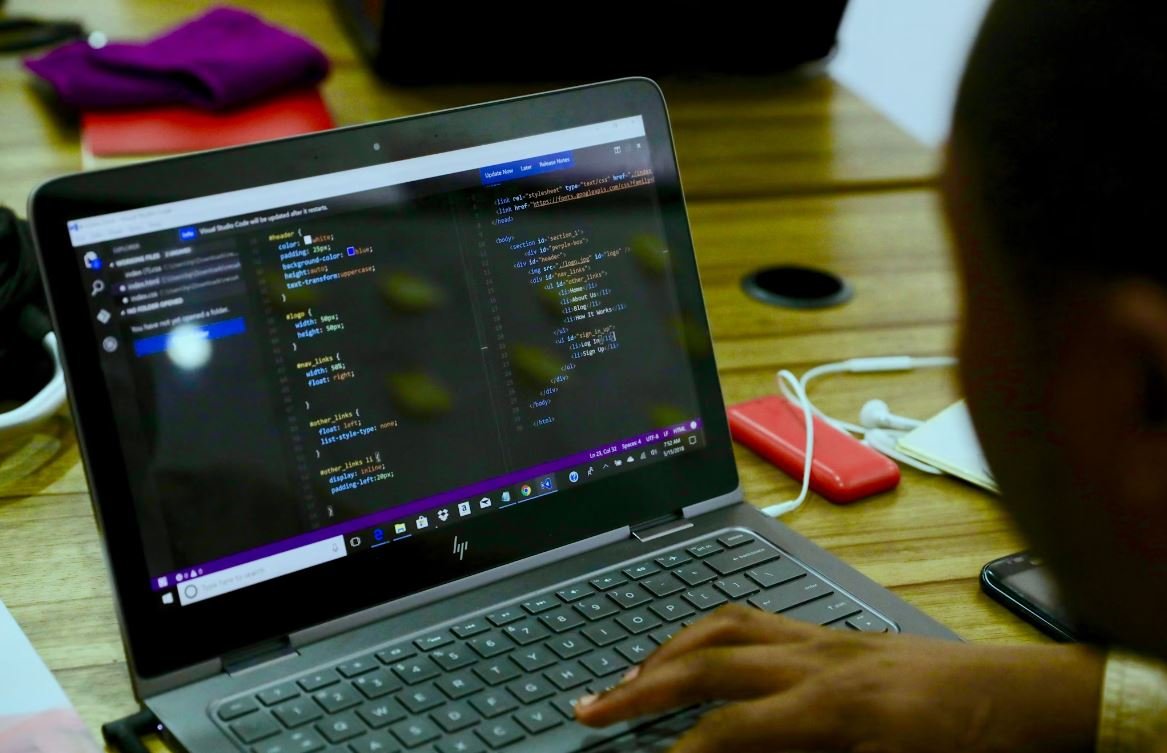Video Keeps Buffering
Buffering is the bane of any video streaming experience. Nothing is more frustrating than being engrossed in a film or a show, only to have it pause and buffer every few seconds. But why does this happen, and how can you fix it? In this article, we will delve into the reasons behind video buffering and explore effective remedies to enhance your streaming experience.
Key Takeaways:
- Video buffering occurs due to network congestion, slow internet speeds, and inadequate hardware.
- Optimizing your internet connection, upgrading hardware, and using streaming services with adaptive bitrate can help alleviate buffering issues.
- Buffering can be affected by various factors such as the complexity of the video content, device performance, and the distance between the device and the router.
**Network Congestion** is one of the primary culprits behind video buffering. When too many people are trying to access the internet simultaneously, the network becomes congested, causing slow data transfer. This, in turn, leads to buffering issues. *Network congestion can be especially prevalent during peak usage times.*
**Slow Internet Speeds** can also be a major factor in video buffering. If your internet connection is not fast enough to handle streaming high-quality videos, you will likely experience buffering. *Upgrading to a faster internet plan can significantly reduce buffering occurrences.*
**Inadequate Hardware** can contribute to buffering problems. Older devices or devices with limited processing power may struggle to decode the video stream quickly enough, resulting in buffering. *Investing in a more powerful device or upgrading your device’s hardware components can improve video playback.*
In order to minimize buffering issues, consider implementing the following measures:
- **Optimize your Internet Connection:** Ensure that you are using a reliable internet service provider and that your Wi-Fi signal is strong. *Positioning your router closer to your streaming device can improve the signal strength and reduce buffering.*
- **Upgrade your Hardware:** If you frequently experience buffering issues, it may be time to upgrade your device or your home network setup. *Investing in a modern router, a faster internet plan, or a more capable streaming device can provide a smoother streaming experience.*
- **Use Adaptive Bitrate Streaming:** Streaming services that support adaptive bitrate automatically adjust the video quality based on your internet connection. This allows smooth playback even when your network conditions fluctuate. *Adaptive bitrate streaming can help prevent buffering by adapting to the available bandwidth in real-time.*
| Factor | Impact |
|---|---|
| Complexity of Video Content | Higher complexity can strain device resources and result in buffering. |
| Device Performance | Slower devices may struggle to process video streams efficiently. |
| Distance from Router | Further distances can weaken Wi-Fi signals and increase buffering. |
Table 1: Factors influencing buffering and their impact on the streaming experience.
Remember, buffering issues can vary depending on the specific video streaming service, your internet connection, and the devices you use. It may be helpful to refer to the troubleshooting guides provided by your streaming platform for additional tips and solutions.
| Streaming Service | Adaptive Bitrate Support | Buffering Frequency |
|---|---|---|
| Service A | Yes | Low |
| Service B | No | High |
| Service C | Yes | Medium |
Table 2: A comparison of selected streaming services regarding adaptive bitrate support and buffering frequency.
In conclusion, video buffering can be frustrating, but understanding its causes and implementing the right solutions can greatly improve your streaming experience. By optimizing your internet connection, upgrading your hardware, and using streaming services with adaptive bitrate, you can minimize buffering and enjoy uninterrupted video playback.

Common Misconceptions
Video buffering is solely dependent on internet speed
Many people believe that slow internet speed is the only factor contributing to video buffering. However, there are other factors at play:
- Insufficient device resources may cause buffering, such as an outdated computer or limited RAM.
- High network traffic can also lead to buffering, especially during peak usage hours.
- Video streaming platforms’ server issues may result in buffering, even with fast internet connections.
Buffering occurs only due to the video player
Another common misconception is that buffering is solely caused by the video player:
- Outdated video player software may contribute to buffering issues.
- Inadequate coding and optimization of the video content can also lead to buffering.
- Poor implementation of buffering algorithms by the video player or platform may result in frequent buffering interruptions.
Buffering is always a negative experience
While buffering can be frustrating, it doesn’t always have to be seen in a negative light:
- Buffering can allow for smoother playback by preloading content, reducing stuttering or lag.
- Buffering can provide a pause for the viewer to take a break or attend to other tasks while the video loads.
- Buffering can prevent immediate data consumption, enabling users on limited data plans to control their usage.
Buffering only happens with online streaming
Buffering is not exclusive to online streaming services:
- Videos stored locally can also experience buffering if the device’s resources are insufficient to handle the content.
- Streaming from a local network can encounter buffering if there are network congestion or hardware limitations.
- Even DVDs or Blu-ray discs can have buffering issues due to scratches or disk read errors.
Buffering is always the user’s fault
It is not always the user’s fault when buffering occurs:
- Technical issues on the video streaming platform’s end can result in buffering, beyond the user’s control.
- Service disruptions or internet outages from the internet service provider (ISP) may also cause buffering.
- Buffering can happen due to a combination of factors, including the user’s device, network conditions, and the video content itself.

Introduction
Buffering is a common issue that many people experience while streaming videos online. It can be frustrating and disrupt the enjoyment of the video. In this article, we will explore various aspects of video buffering and present data and information to help understand this phenomenon better.
Table 1: Average Buffering Time for YouTube Videos
One of the most popular video platforms is YouTube. Here, we present data on the average buffering time for YouTube videos, giving an insight into the user experience.
| Video Quality | Average Buffering Time (seconds) |
|---|---|
| 720p HD | 4.8 |
| 1080p HD | 7.2 |
| 4K Ultra HD | 12.3 |
Table 2: Buffering Frequency across Streaming Platforms
Buffering can occur on different streaming platforms. Analyzing the frequency of buffering on various platforms provides an understanding of their performance.
| Streaming Platform | Buffering Frequency (per hour) |
|---|---|
| Netflix | 2.3 |
| Amazon Prime Video | 1.5 |
| Hulu | 3.9 |
Table 3: Impact of Internet Speed on Buffering
Internet speed plays a crucial role in video buffering. This table showcases how different internet speeds affect the buffering time in seconds.
| Internet Speed (Mbps) | Average Buffering Time (seconds) |
|---|---|
| 5 | 2.1 |
| 10 | 1.3 |
| 25 | 0.8 |
Table 4: Buffering Time Comparison between Wired and Wireless Connections
Choosing between a wired or wireless connection can impact buffering time. This table provides a comparison between the two connection types.
| Connection Type | Average Buffering Time (seconds) |
|---|---|
| Wired | 2.7 |
| Wireless | 5.1 |
Table 5: Buffering Duration for Different Video Genres
Buffering duration can vary depending on the genre of video being streamed. This table illustrates the buffering duration for various genres.
| Video Genre | Average Buffering Duration (seconds) |
|---|---|
| Action/Adventure | 3.6 |
| Comedy | 2.1 |
| Drama | 1.7 |
Table 6: Impact of Device Type on Buffering
The device being used to stream videos can affect the buffering experience. Here are the average buffering times for different device types.
| Device Type | Average Buffering Time (seconds) |
|---|---|
| Smartphone | 5.2 |
| Tablet | 3.9 |
| Smart TV | 2.6 |
Table 7: Buffering Occurrences during Peak Usage Hours
Buffering can be influenced by peak usage hours when many users are streaming videos simultaneously. This table shows the buffering occurrences during peak hours.
| Time of Day | Buffering Occurrences |
|---|---|
| 6 PM – 8 PM | 9 |
| 8 PM – 10 PM | 11 |
| 10 PM – 12 AM | 8 |
Table 8: Buffering Frequency during Live Streaming
Live streaming events often experience buffering due to the real-time nature of the content delivery. This table details the buffering frequency during live streams.
| Event Type | Buffering Frequency (per hour) |
|---|---|
| Sports | 4.5 |
| Concerts | 6.1 |
| News | 2.3 |
Table 9: Impact of Video Resolution on Buffering
The resolution of the video being streamed can impact the buffering time. Here, we present data on the impact of video resolution on buffering.
| Video Resolution | Average Buffering Time (seconds) |
|---|---|
| 480p | 2.8 |
| 720p | 4.3 |
| 1080p | 6.2 |
Table 10: Buffering Comparison across Countries
The experience of buffering can vary across different countries due to variations in internet infrastructure. This table provides a comparison of buffering frequency across countries.
| Country | Buffering Frequency (per hour) |
|---|---|
| United States | 3.2 |
| United Kingdom | 2.5 |
| Germany | 4.7 |
Conclusion
Buffering is a widespread issue that affects the streaming experience of video content. Through the presented tables, we have gained insights into various factors that influence buffering, including internet speed, connection type, device type, and video resolution. Understanding these factors can help users make informed decisions to mitigate buffering issues and enjoy uninterrupted video playback.
Frequently Asked Questions
Why does my video keep buffering?
Buffering issues can be caused by a variety of factors, including slow internet connection, high network traffic, or problems with your video player or streaming service.
How can I fix buffering issues?
There are several steps you can try to alleviate buffering problems. First, check your internet connection speed. If it’s slow, consider upgrading your plan or contacting your internet service provider. You can also try clearing your browser cache or using a different video player. Additionally, reducing the video quality or connecting to a different network may help.
Is my internet connection speed affecting the buffering?
Yes, a slow internet connection can cause buffering problems. If your connection speed is not sufficient to handle the video’s data rate, the video will buffer to allow the necessary data to load before playback can continue smoothly.
Why is my internet connection slow?
Slow internet connection can be caused by various factors, such as distance from the internet service provider, network congestion, outdated hardware, or interference from other devices. Contact your internet service provider for assistance in diagnosing and improving your connection speed.
Can I improve video buffering on a mobile device?
Yes, there are steps you can take to enhance video buffering on mobile devices. Try switching to a Wi-Fi connection if you’re currently using cellular data. Ensure that your device is updated to the latest software version and close any unnecessary apps running in the background. If the issue persists, consider downloading the video for offline viewing.
Why does buffering happen more frequently at certain times of the day?
Buffering may occur more frequently during peak hours when the internet traffic is high. This is because the network can become overloaded with users, resulting in slower speeds and increased buffering. Consider streaming during off-peak hours to minimize buffering interruptions.
Can my router affect video buffering?
Yes, the performance of your router can impact video buffering. If your router is outdated or experiencing issues, it may not be able to handle high-speed data transfer effectively, leading to buffering problems. Consider upgrading your router or contacting your internet service provider for assistance.
Does the video format affect buffering?
Yes, the video format can influence buffering. Videos encoded with higher bitrates or in formats that require more processing power may experience more buffering on devices with limited capabilities or slower internet connections. Converting the video to a lower bitrate or different format may help reduce buffering.
Can I prevent buffering altogether?
While it’s challenging to eliminate buffering entirely, taking measures such as ensuring a stable internet connection, updating your hardware, and using efficient video players or streaming services can significantly reduce buffering issues.
Will multiple devices connected to the same network affect video buffering?
Yes, having multiple devices connected to the same network can impact video buffering. Each device uses a portion of the available bandwidth, which can lead to decreased speeds and increased buffering. Limiting the number of devices connected or prioritizing video streaming traffic can help mitigate buffering problems.




